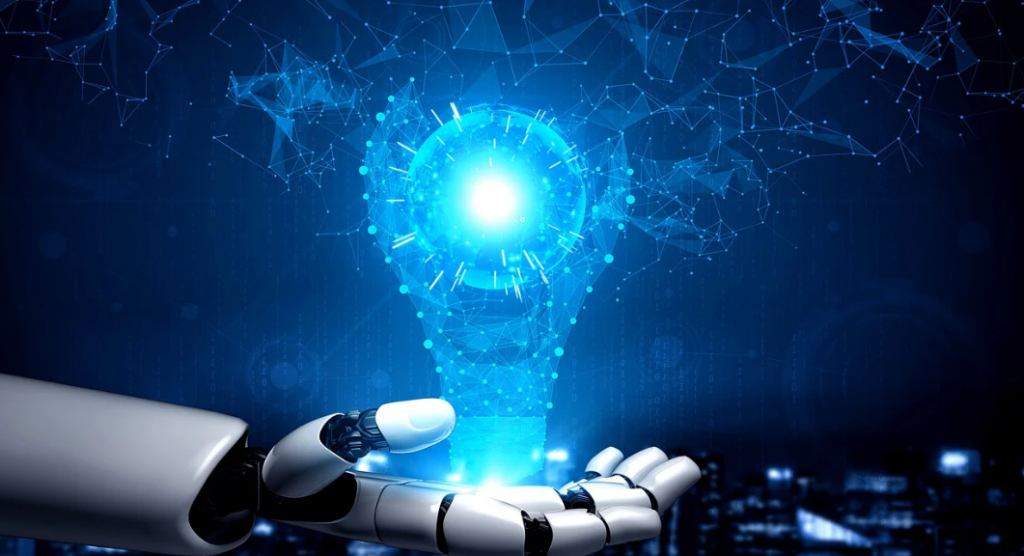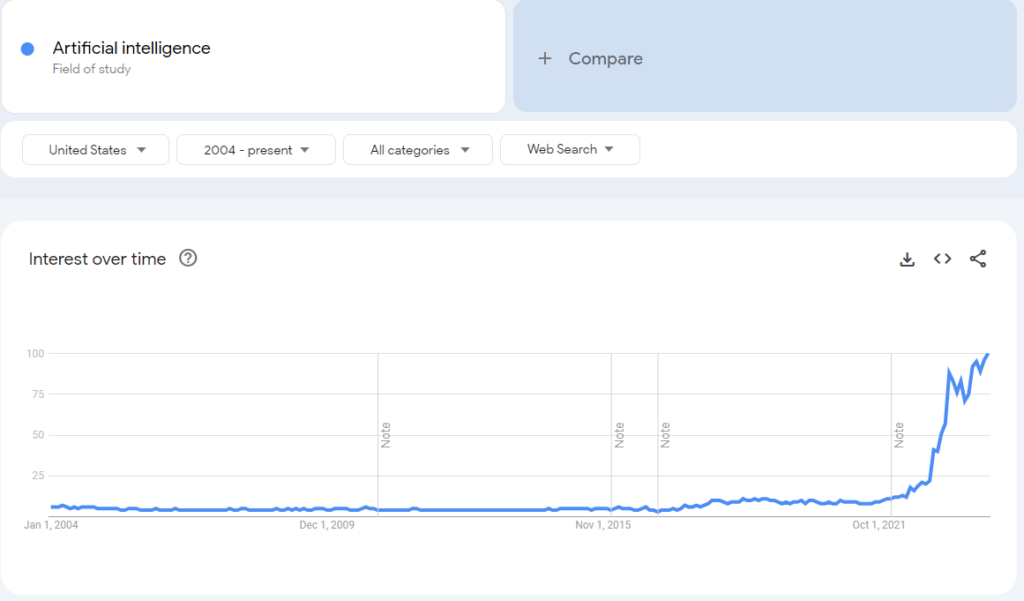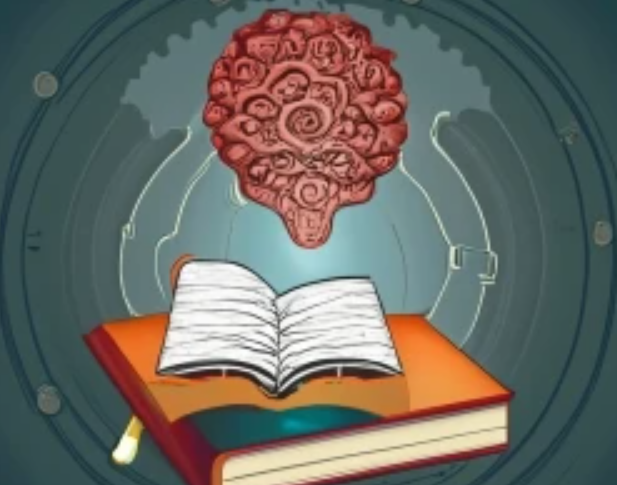
Artificial intelligence, or AI, is a programme that seeks to imitate human intelligence through calculation algorithms. Its creation enables computers to perform operations and think like a human being. Since 2010, the development of artificial intelligence has been accelerated by Big Data. Find out everything you need to know about artificial intelligence in this article.
Table of Contents
Definition of artificial intelligence
According to John McCarthy, one of the pioneers of the field, it is ” the science and engineering of making intelligent machines “. Artificial intelligence (AI ) is a field of computer science that seeks to create systems capable of performing tasks that would normally requirehuman intelligence.
However, AI is often seen as a vast and multi-dimensional concept, difficult to define precisely due to its broad and constantly evolving nature. For example, technologies ranging from the simple recommendation algorithms used by Netflix, according to Forbes, to the complex autonomous driving systems developed by companies such as Tesla, are all considered AI. This diversity makes the field both fascinating and enigmatic, with definitions evolving as the technology advances.
The history of artificial intelligence
The history of artificial intelligence began in 1943, with the publication of the article “A Logical Calculus of Ideas Immanent in Nervous Activity” by Warren McCullough and Walter Pitts. In this paper, the scientists presented the first mathematical model for the creation of a neural network.
In 1950, Snarc, the first neural network computer, was created by two Harvard students: Marvin Minsky and Dean Edmonds. That same year, Alan Turing published the Turing Test, which is still used to evaluate AIs. This test laid the foundations for artificial intelligence, its vision and its objectives: to replicate or simulate human intelligence in machines.
But it wasn’t until 1956 that the term artificial intelligence was used for the first time, during John McCarthy’s “Dartmouth Summer Research Project on Artificial Intelligence” conference. At this event, researchers presented the objectives and vision of AI. Many consider this conference to be the real birth of artificial intelligence as we know it.
Several years went by and work on artificial intelligence continued. In 1959, Arthur Samuel coined the term Machine Learning while working at IBM. In 1989, the Frenchman Yann Lecun developed the first neural network capable of recognising handwritten numbers, an invention that was to lead to the development of deep learning.
Ten years later, in 1997, a major event marked the history of AI. IBM’s Deep Blue system triumphed over world chess champion Gary Kasparov. For the first time, the machine had beaten man.

What types of artificial intelligence are there?
Thanks to the development of artificial intelligence and technologies such as deep learning and machine learning, researchers agree that there are 3 types of artificial intelligence:
General artificial intelligence
General or deepAI is artificial intelligence capable of performing any cognitive task in the same way as a human or animal. Still considered hypothetical, some scientists are questioning GPT-4 and the likelihood that it is the first form of general AI. A large majority of AI researchers believe that humanity has the technology to create general AI, thanks in particular to neural networks.
Strong artificial intelligence
We speak ofstrong AI or superintelligence when a model refers to philosophical knowledge and shows signs ofa conscience of its own. Close to a science fiction scenario, AI researchers nevertheless believe that strong AI is currently impossible to create. For them, the notion of consciousness and feelings cannot be created in mathematical systems that manipulate and respond using symbols and calculations.
Weak artificial intelligence
The final distinction in artificial intelligence isweak or narrowAI . This AI is a system capable of performing a single task almost perfectly, without the need for human supervision. This is the model most commonly used and created to speed up various processes in different business sectors.
What is Artificial Intelligence used for?
Artificial intelligence (AI) has helped to transform many sectors of activity, including medicine, science, finance, the automotive industry and many others.
In medicine, AI is being used to diagnose and predict disease, enabling early detection and rapid intervention. It is also being applied in pharmaceutical research to speed up drug discovery and improve treatments.
In scientific research, AI analyses vast quantities of data and makes discoveries in fields such as astrophysics, genomics, biology and chemistry. It is accelerating scientific progress and opening up new avenues of research.
With the arrival of GPT-3.5 in November 2022, a powerful LLM, the potential of artificial intelligence has increased tenfold. AI is now also being used in creative fields such as text and image generation, and even in audiovisual applications such as VALL-E, Midjouney and GEN-2.
Faced with the massive changes brought about by artificial intelligence, many people are also beginning to wonder about the dangers it could represent. Considered as dangerous as the nuclear bomb by business leaders such as Sam Altman, CEO of Open AI, and researchers, the latter believe that AI could become a threat to humanity.
Thanks to its capacity to learn and evolve, AI could one day surpass man in certain fields, and even replace him. That, at any rate, is what the Goldman Sachs study suggests, claiming that in a few years’ time, more than 300 million jobs will disappear. At the same time, people are asking questions about their privacy and personal data. Since AI needs data to improve itself, will it have access to everyone’s personal data under the pretext of a major technological and economic development? Concerned about this worst-case scenario, Europe and other companies such as Google are putting in place regulations in their systems or through legislation such as the AI Act.
But AI is not the only potential danger; everything also depends on how it is used. Even a seemingly innocuous AI could be misused maliciously. We can already see this with the rise of “DeepFakes”: fake videos created using Deep Learning to portray a person in a compromising situation.
Artificial intelligence will continue to develop at a rapid pace over the next few years. It is now up to humanity to regulate it in order to develop healthy and ethical AI.
What are the most popular Artificial Intelligences?
Artificial intelligence is growing by the day, so much so that applications can now simplify and even automate everyday tasks. Here are 10 AI-powered applications that are speeding up everyday life.
- ChatGPT: OpenAI’s famous text generator is the AI tool par excellence. Capable of responding to all kinds of requests, this model has become the personal assistant of millions of people.
- DALL-E2: this model is currently the most famous text image generator. Designed by OpenAI, its name is a cross between Wall-E and the painter Salvador Dali.
- GEN-2: this AI tool developed by Runway can be used to transform videos or create them from images or text. With 5 transformation modes, Gen-2 is a complete video creation tool.
- TextCortex: compatible with around thirty sites (Facebook, Twitter, LinkedIn, etc.), this plugin uses machine learning to translate more than 25 languages in just a few seconds.
- GitHub Copilot: this artificial intelligence-based integrated development environment extension has been developed by GitHub and OpenAI. It helps developers by automatically completing their code.
- Adobe Firefly: this AI engine from Abode uses only royalty-free photos to generate its new creations. Adobe makes a point of ensuring that its AI is the first ethical image generation AI.
- Bard AI: bard is Google’s intelligent chatbot. Not yet available in Europe, Google wants to put in place an ethical AI policy that does not misinform its users.
- Jasper: this software is aimed at all creators of written content. It lets you write articles 5 times faster, with different tones and angles.
- Spotify DJ: even music platform Spotify has tried its hand at artificial intelligence. Thanks to DJ, the application can offer playlists based entirely on the user’s tastes and evolve according to their choices.
- Gamma.app: this highly impressive artificial intelligence tool can create slideshow-style visual presentations with just a few clicks.
You now know everything there is to know about artificial intelligence. If you’re interested in artificial intelligence or considering a career in data science, check out ridplace users’ bookmarks on AI or submit your own.
